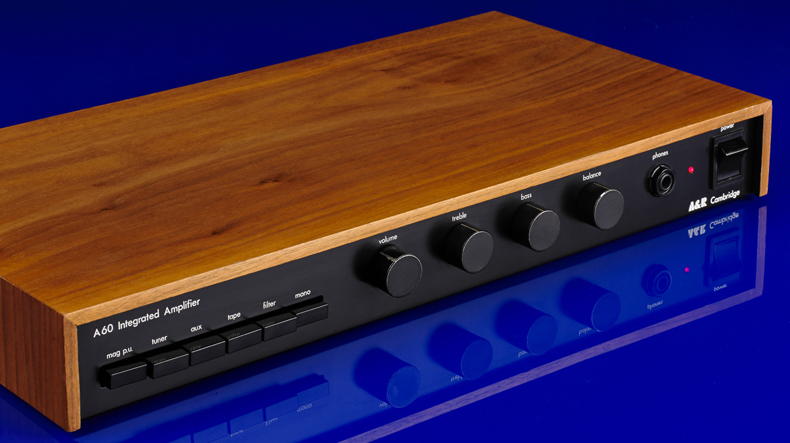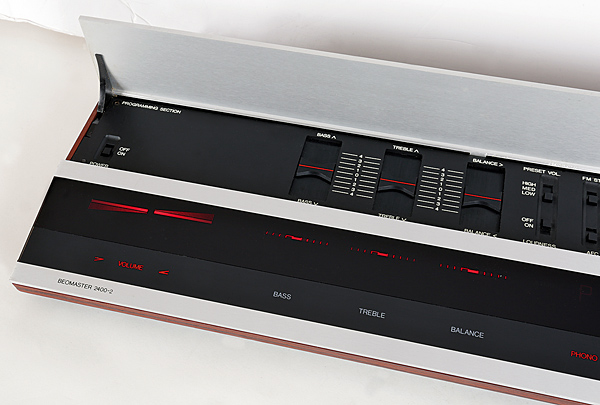In a way, it’s the Citroen of the hi-fi world. Micromega is a French firm that has always gone above and beyond. Its products are occasionally excellent, and occasionally less so, but they are never dull – at least in terms of design. It’s maybe no surprise that it was one of the first to notice the resurgence in ‘micro hi-fi.’ Although Aurex invented the breed forty years ago, it wasn’t until lately that compact, high-quality separates become commonplace in hi-fi.
Micromega’s connection with the genre began with the MyDAC in 2012, but it wasn’t until 2014 that the £480 matching amplifier was released. That in itself is instructive; many manufacturers appear to be able to release entire product lines at once, so why the extended wait for a dinky (140x75x140mm, 1kg) housed in a plastic case? I’m not sure, but I’m guessing they did it the hard way, like Citroen automobiles…
The fact that this is a Class AB design is at its core. This was crucial for the design team, as they didn’t believe Class D modules sounded good enough for the professional hi-fi applications the MyAmp was intended to service. Everything else fell into place after that, including the stress of trying to get sufficient power out of such a little box. The situation is – as always – cooling. Because an ABS plastic chassis is less expensive, the designers were able to specify higher-quality components. However, ABS plastic does not absorb heat well, thus Micromega had to incorporate a special, silent-running magnetic levitation fan-based forced convection cooling system.
Thanks to a powerful 260W LLC Resonant Mode power supply, the designer claims 30W RMS per channel and twice that into half the load (claimed to be equivalent to a 250VA transformer with 15,000uF capacitors). A 24-bit/96-kHz ESS Sabre Hyperstream DAC with electrically separated USB input and 24-bit/192-kHz optical and coaxial digital inputs, as well as aptX Bluetooth, is included in the package. Three analogue inputs are used, and they are kept analogue throughout the signal chain. Around the back, there’s a 3.5mm headphone jack, a subwoofer output, and remote control jacks. The loudspeaker binding pins are large and bulky, and the 256-step volume control, with its extremely precise 0.5dB steps, is cumbersome to operate via the fascia buttons, but the provided card remote control makes it easier.
At the 2014 Munich High End Show, I first heard the MyAmp driving a pair of large Focal Scala v2 Utopia loudspeakers and was blown away by how fantastic it sounded, particularly its remarkably open and spacious character. The MyAmp sounds nothing like other compact amplifiers, with a rich middle and unexpectedly deep bass. The Micromega was not overwhelmed even while driving a pair of £7,000 Sonus faber Olympica II loudspeakers in my own system, which were supplied by a £9,000 dCS Debussy DAC. Most people, on the other hand, would pair it with more reasonably priced accessories; my sample spent many happy hours with Cambridge Audio’s fantastic £900 Aeromax 6 floorstanders, whose 90dB sensitivity was just right to allow the amp sing.
Even with thin sounding and forward source material, the small MyAmp is smooth and even via the analogue inputs, never sliding into coarseness. It’s unexpectedly rich and inviting with smoother things for a product of its pricing (and size). It moves along in a rhythmic manner and provides a pleasingly expansive recorded ambience. In absolute terms, the cymbals have a tiny softness to them, and the lower end lacked the transparency and urgency of more expensive amplifiers, but it still tries to do things right. It gets loud enough, but the thermal cut-out triggered a little sooner than I expected, even at moderate volume levels in a large listening space. Maybe it was because the song Whole Lotta Love by Led Zeppelin was playing?
Although a high-quality analogue source sounds smoother, hi-res digital via the USB port proved remarkably civilized compared to other rivals at the price; there’s a certain directness and intimacy you get from the digital input that analogue inputs don’t fully have. The Micromega’s Bluetooth input sounds crisp and melodious, but it lacks delicacy and stereo depth; it’s a nice convenience feature, but I wouldn’t recommend it for serious hi-fi listening. Overall, the MyAmp creates music that is both entertaining and charming, with a distinct Gallic flavor. I can’t think of a better tiny amplifier for the money if you want to make music in your study, bedroom, or kitchen.







